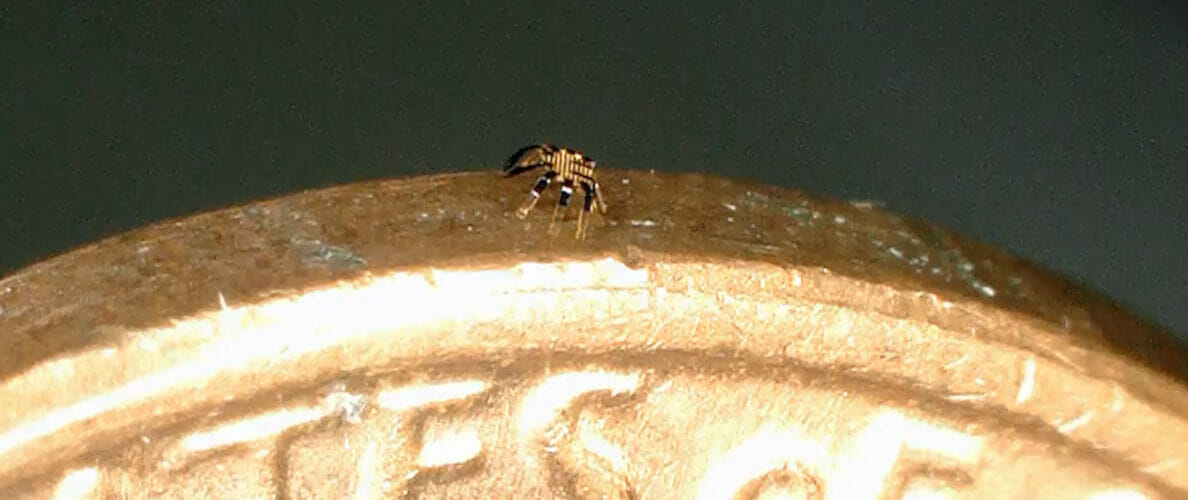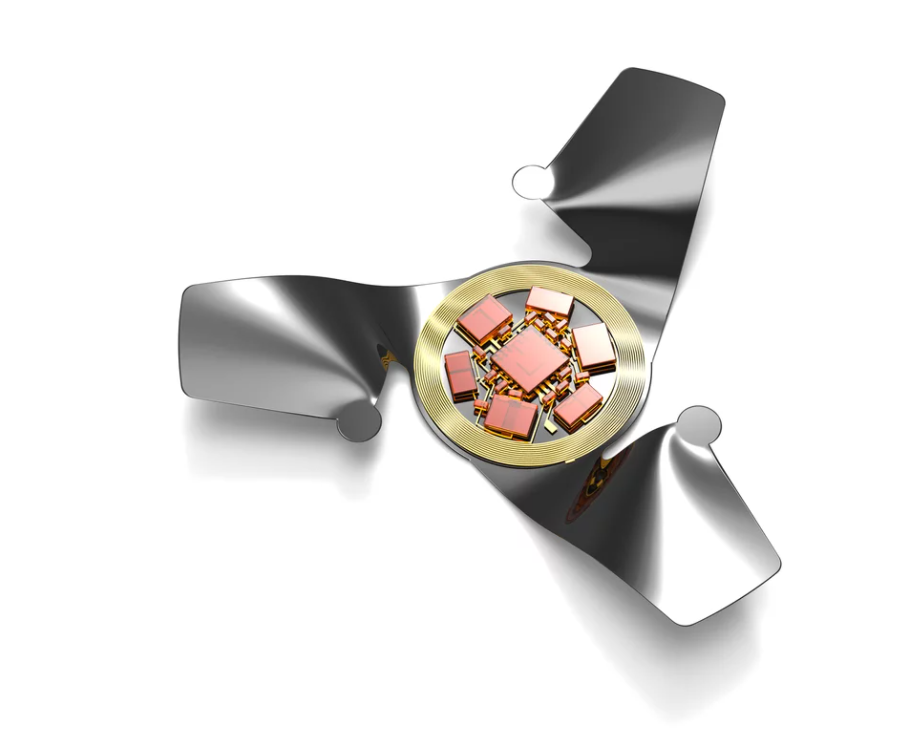The following report is a press release from Northwestern University:
Just a half-millimeter wide, the tiny crabs can bend, twist, crawl, walk, turn and even jump. The researchers also developed millimeter-sized robots resembling inchworms, crickets and beetles. Although the research is exploratory at this point, the researchers believe their technology might bring the field closer to realizing micro-sized robots that can perform practical tasks inside tightly confined spaces.
The research was published today (May 25) in the journal Science Robotics. Last September, the same team introduced a winged microchip that was the smallest-ever human-made flying structure (published on the cover of Nature).
Robotics is an exciting field of research, and the development of microscale robots is a fun topic for academic exploration. You might imagine micro-robots as agents to repair or assemble small structures or machines in industry or as surgical assistants to clear clogged arteries, to stop internal bleeding or to eliminate cancerous tumors — all in minimally invasive procedures.
Said John A. Rogers, who led the experimental work
Our technology enables a variety of controlled motion modalities and can walk with an average speed of half its body length per second. This is very challenging to achieve at such small scales for terrestrial robots.
Added Yonggang Huang, who led the theoretical work
A pioneer in bioelectronics, Rogers is the Louis Simpson and Kimberly Querrey Professor of Materials Science and Engineering, Biomedical Engineering and Neurological Surgery at Northwestern’s McCormick School of Engineering and Feinberg School of Medicine and the director of the Querrey Simpson Institute for Bioelectronics (QSIB). Huang is the Jan and Marcia Achenbach Professor of Mechanical Engineering and Civil and Environmental Engineering at McCormick and key member of QSIB.
Smaller than a flea, the crab is not powered by complex hardware, hydraulics or electricity. Instead, its power lies within the elastic resilience of its body. To construct the robot, the researchers used a shape-memory alloy material that transforms to its “remembered” shape when heated. In this case, the researchers used a scanned laser beam to rapidly heat the robot at different targeted locations across its body. A thin coating of glass elastically returns that corresponding part of structure to its deformed shape upon cooling.
As the robot changes from one phase to another — deformed to remembered shape and back again — it creates locomotion. Not only does the laser remotely control the robot to activate it, the laser scanning direction also determines the robot’s walking direction. Scanning from left to right, for example, causes the robot to move from right to left.
Because these structures are so tiny, the rate of cooling is very fast. In fact, reducing the sizes of these robots allows them to run faster.
Rogers explained

To manufacture such a tiny critter, Rogers and Huang turned to a technique they introduced eight years ago — a pop-up assembly method inspired by a child’s pop-up book.
First, the team fabricated precursors to the walking crab structures in flat, planar geometries. Then, they bonded these precursors onto a slightly stretched rubber substrate. When the stretched substrate is relaxed, a controlled buckling process occurs that causes the crab to “pop up” into precisely defined three-dimensional forms.
With this manufacturing method, the Northwestern team could develop robots of various shapes and sizes. So why a peekytoe crab? We can thank Rogers’ and Huang’s students for that.
With these assembly techniques and materials concepts, we can build walking robots with almost any sizes or 3D shapes. But the students felt inspired and amused by the sideways crawling motions of tiny crabs. It was a creative whim.
Rogers said
AUTHOR COMMENTARY
Being my usual pessimistic-self, things such as this are worrisome as it demonstrates the further push to make all the robots so tiny you can hardly see them, and can enter our bodies, to do Lord only knows what.
Lo, this only have I found, that God hath made man upright; but they have sought out many inventions.
Ecclesiastes 7:29
[7] Who goeth a warfare any time at his own charges? who planteth a vineyard, and eateth not of the fruit thereof? or who feedeth a flock, and eateth not of the milk of the flock? [8] Say I these things as a man? or saith not the law the same also? [9] For it is written in the law of Moses, Thou shalt not muzzle the mouth of the ox that treadeth out the corn. Doth God take care for oxen? [10] Or saith he it altogether for our sakes? For our sakes, no doubt, this is written: that he that ploweth should plow in hope; and that he that thresheth in hope should be partaker of his hope. (1 Corinthians 9:7-10).
The WinePress needs your support! If God has laid it on your heart to want to contribute, please prayerfully consider donating to this ministry. If you cannot gift a monetary donation, then please donate your fervent prayers to keep this ministry going! Thank you and may God bless you.









Jacob! I kept praying and the Lord answered …. Zephaniah 2:3
Yikes, that thing is creepy! to me it looks like a spider, and I am terrified of spiders! they can have their demon technology, I want no part of it!
F.y.i The word demon is not in the Holy Scriptures.
Exactly and another thing that comes to mind is what happens if I mean WHEN these tiny insect robots are let out into the general population spying on everyone everywhere there will be no where to hide. The more I see and hear about these new developing technologies the more I hate it and want less and less of it in my life.
Jacob I am glad you are a pessimist. You have been warning me for at least 2 years on what’s to come. It’s refreshing because you are giving us the truth. It may not always be easy to hear. Thank you for being a blessing.
These things have endless possibilities! Even if your doors and windows are shut. Or your car is locked. This thing can find a way in…..for what? Wait ’til they figure out how to make the thing carry a payload…..